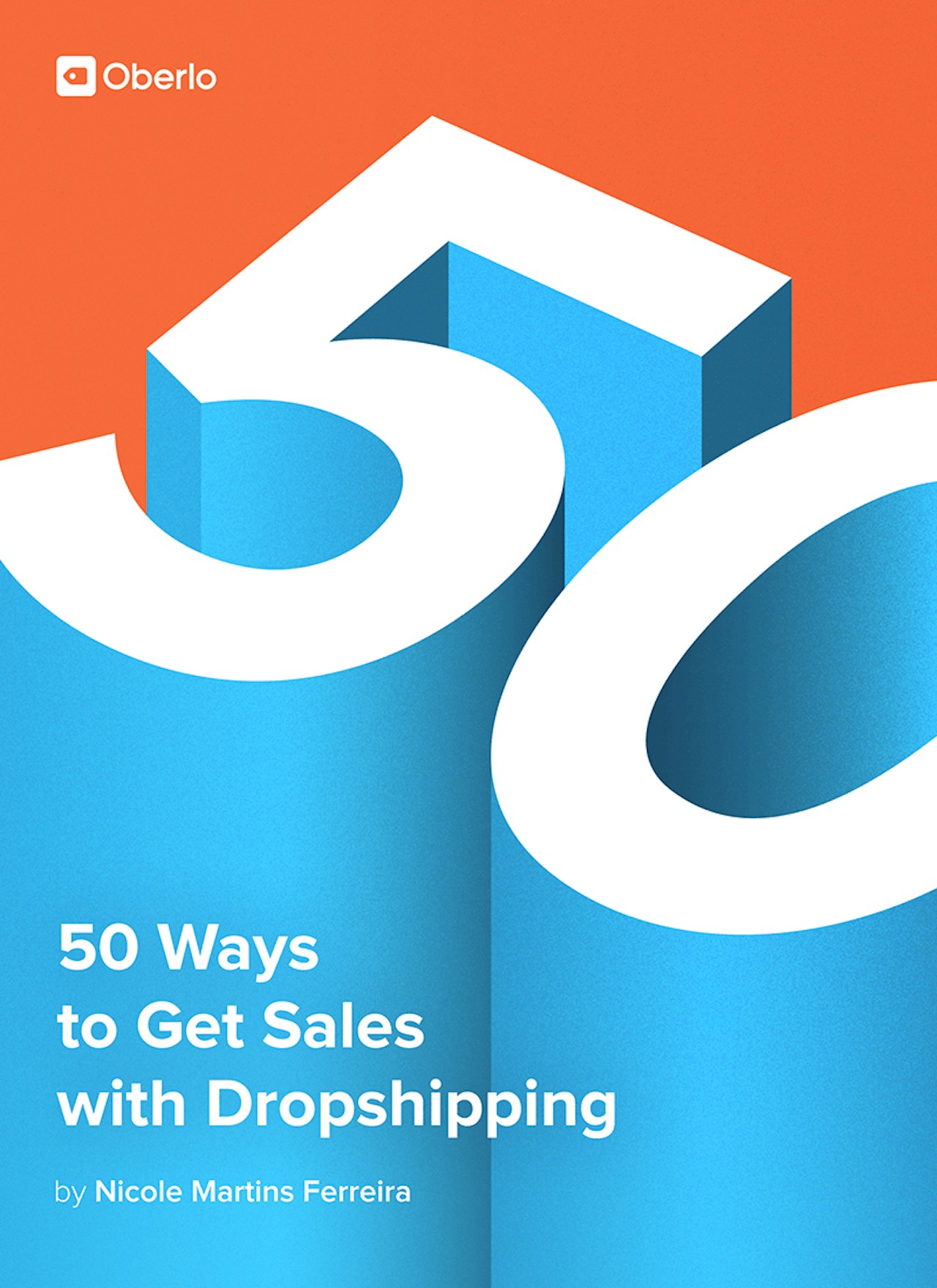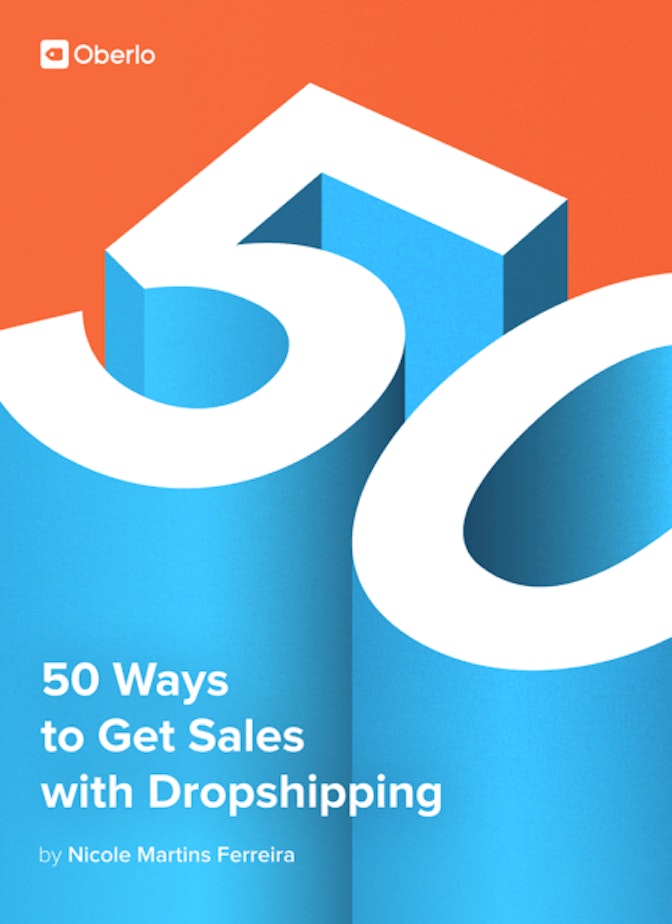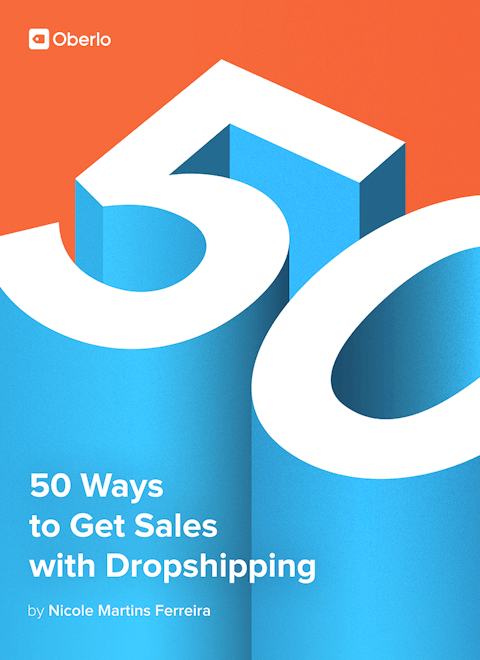Many store owners decide to start a blog but fail to follow through. Why? Starting a blog is hard work. But fortunately, it can pay off. Building up free organic traffic will allow you to build a more profitable business. According to Hubspot, companies that published over 16 posts a month averaged about 3.5x more traffic than those who posted under four times a month. Hubspot also noted that companies with active blogs tend to have 97% more inbound links than those who don’t. Blogging can drive more traffic to your store which you can convert into loyal customers.
Example: An Organised Life is a great example of an online store that has a successful and ongoing blog. Their blog features the same black and white minimalist look as their products. When you browse their blog you’ll notice how their imagery incorporates products in a subtle but effective way. Their blog content is mostly about organization which complements their product line of notebooks, planners, and calendars. They don’t publish daily but it’s consistent and engaging. What they show in their blog layout is the importance of visuals. Their visuals take up a lot of space while their title is subtle. When visitors view the blog post itself, they’re immediately captivated by stunning visuals. The blog font is small which adds extra emphasis to the pictures. Each blog post incorporates product images keeping it product focused.

How to Write a BlogPost: Blogging Tips
Create a set of guidelines to set the standard and tone for your blog. Make them clear so qualified writers can follow them while maintaining the integrity of your brand. When writers contact you regarding freelance or guest post opportunities, you can help ensure a high level of quality as you have the guidelines for the blog writing in plain view.
Growing your blog is hard work. Make your blog profitable by running Facebook retargeting ads. For one of my stores I was able to have a 9x ROI by retargeting blog traffic. These type of ads are also a lot cheaper than most Facebook ads and have a great return. When my store was two days old, I was pumping out content with quotes from niche influencers. It would be a list of ‘Top Ten Inspiring Quotes from (influencer). I’d then share their content on twitter and tag them. Since they were relatively medium sized influencers, most of the time they’d retweet it and share it across their social media. As a result, I gained free traffic. All I had to do was monetize it. That’s where the retargeting ad came in. It’s the easiest and cheapest way to make a blog profitable. That’s how we got our first couple sales on on our store.
Your blog should have a lot of content added regularly but you don’t have to do it all yourself. If your goal is to pump out content about 4 times a week but you’re a solopreneur, you’ll need to find guest writers. You can create a posting on Craigslist looking for guest writers or interns who will write for you to gain experience or reach a bigger audience. You can also reach out to niche influencers and offer a backlink in exchange for the guest post. Since blogging is time consuming, having others create the content for you allows you to grow your traffic while you focus on customer service and marketing.
Update your blog posts every four months. Remove outdated content and add some new content to improve your posts. Make it your aim to keep your blog writing up to date. Since it’s an updated version you can share it with your audience. It’s great for SEO and your customers will love that you’ve kept your content fresh. When I post an updated article on social media I’ll write something like ‘UPDATED: (blog post name).’
Optimize your blog content for keywords. What type of niche content does your customer search for? Use tools like Keyword Planner to help you find the right keywords to optimize your content for. Use keyword research to help you build a strong blog foundation.
When thinking about how to write a blog post, don’t focus solely on lead generation articles. Retention articles tend to be more profitable and valuable to your customers. For example, if you own a running store, you’ll want to create content that helps customers become better runners. The longer they stick with running, the more likely they’ll keep buying running-related products. You’ll still want content to bring in new leads such as ‘Top 10 Running Shoes to Buy in 2018’. But retention articles can also bring in new leads through customer loyalty. Your blog should have a mix of content which has different purposes. Balance out the number of lead generation articles with retention articles to serve different purposes and reach different readers.
Make your blog visual. Add images, infographics and videos throughout the blog post. If you’re creating a list post, you’ll want to have a graphic for each section. If your blog post is really long, you’ll want to ensure that there’s quite a few graphics to break up the text and make it an easier read for your customers.
Promote your blog content. Most people write blog posts and share it on social media. However, the more you promote your content, the more clicks you’ll get. If promoting on social media, you’ll want to make use of hashtags. You’ll also want to get backlinks on relevant articles that might find your blog post valuable. So you might promote your content by doing guest posts and linking out to your article. Or you could reach out to the people or brands mentioned in your article.
If you go through writer’s block or get too busy running your store, you can find freelancers for your blog writing, or ask your customers if they’d like to contribute a guest post to your blog.
Most store owners either don’t have a blog or have an obvious lack of dedication to the blog they have. The reality is sometimes store owners set unrealistic expectations about the volume they can produce. You’re a store owner! You’ve got a lot of work ahead of you. So no, as a solopreneur, you probably won’t be able to write one blog post a day while working a full-time job. A full-time content creator probably couldn’t even pump out an article a day without being exhausted by it. Set a realistic expectation. If it ends up being one blog post a week, commit to it, it’s better than nothing at all.
Once your blog starts taking off, many store owners fail to respond to comments. The comment section of your blog still counts as customer service. By responding to comments you can strengthen your relationship with your customers. Treat it like an email or social media post. And answer everything, unless it’s spam.
Cater the blog topics to your customer. When customers email you, what are they constantly asking about? I don’t mean product related questions but niche focused. For example, if you sell dresses, customers may ask questions about what accessories look best with a dress they like. Use this as a way to build out your product collection and your blog as a source of qualitative research. You can share different looks, styling tips, and lifestyle themed content to add various dimensions to your blog. By creating blog content around your common customer inquiries, you become more likely to build your blog’s audience.
How to Write a BlogPost: Blogging Tools
Headline Analyzer: This blogging tool helps you write better headlines. When you type in your headline, the Headline Analyzer will give you a score out of 100. It’ll also let you know what type of words (common, uncommon, emotional, power) you’re using to help you balance out the blog title. If you’re looking to create attention grabbing or clickbait headlines, this is the tool you should use.
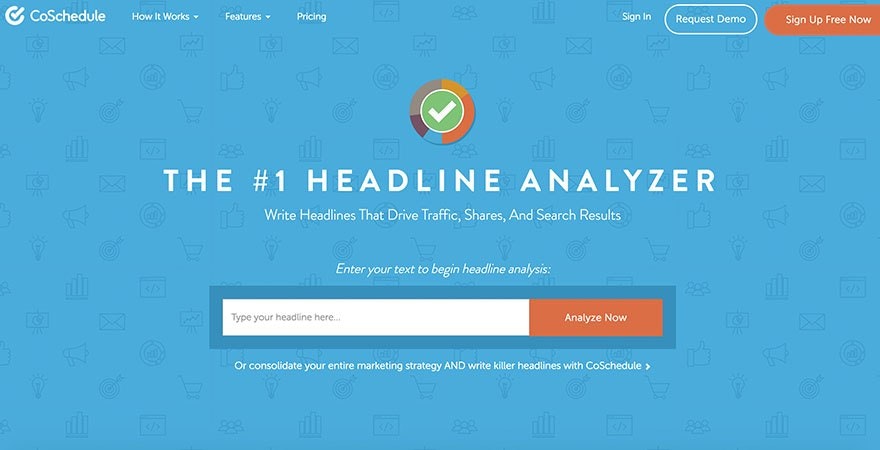
Answer The Public: This blogging tool is great for sourcing blog topics. All you need to do is type in your niche name into the search box. Then, a list of blog topics in the form of questions will populate. For example, if you search ‘fidget spinners’ you’ll get topics like ‘How fidget spinners are helpful’ and ‘which fidget spinners are safe.’ You can use these types of topics for your blog content in the early stages to build out your organic ranking.

Keyword Planner: When you’re thinking about how to write a blog, you can use Google’s Keyword Planner to help you determine the right keywords you should be using to optimize your blog content. You’ll see the average monthly searches and how competitive it is. If you plan on running ads to your content you can even look at their suggested bid.
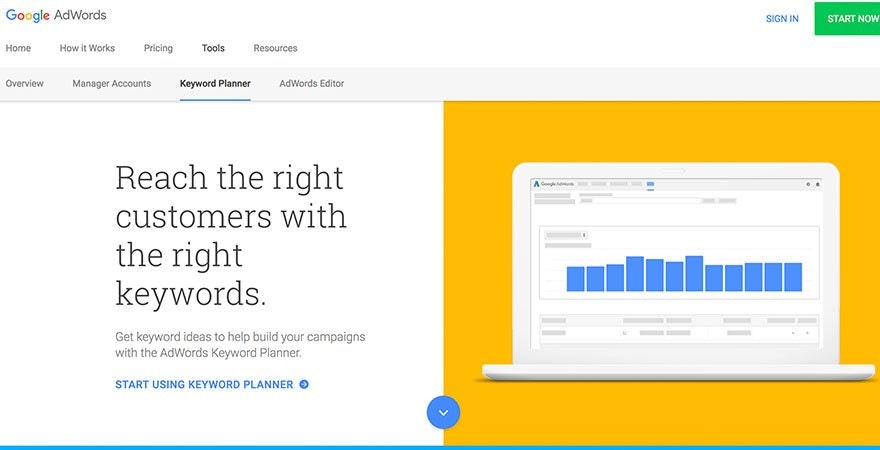
BuzzSumo: Buzzsumo is a great blogging tool as it allows you to view the most popular content on other blogs. You’ll see how many shares each piece of content had on each platform. You can also view backlinks, sharers, and share the content. Whether you’re looking for blog topics based on popularity or trying to understand what type of content your competitors share, you’ll gain access to the perfect amount of data.
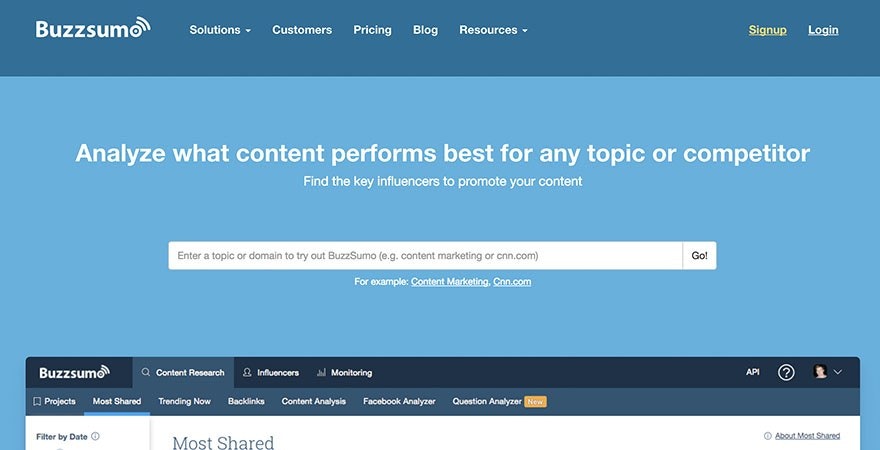
Long Tail Pro: Long Tail Pro is the blogging tool that helps you find profitable keywords. You can calculate keyword profitability, view competitiveness score and more. Long tail keywords tend to be easier to rank for giving your business a better chance of ranking higher in the searches.

Hemingway App: Hemingway App tells you what your readability score is. This can be a very useful tool, especially when you’re learning how to become a writer. Most publications have a Grade 6 reading level. The lower the reading level is the more likely it is that you’ll reach a wider audience. For those with customers who aren’t fluent in English, a lower reading level makes it more likely that they’ll understand what you wrote. The higher your reading level, the harder it is for the average person to read. For example, Grade 6 reading level is good but Grade 10 reading level is bad. At least for blogging.
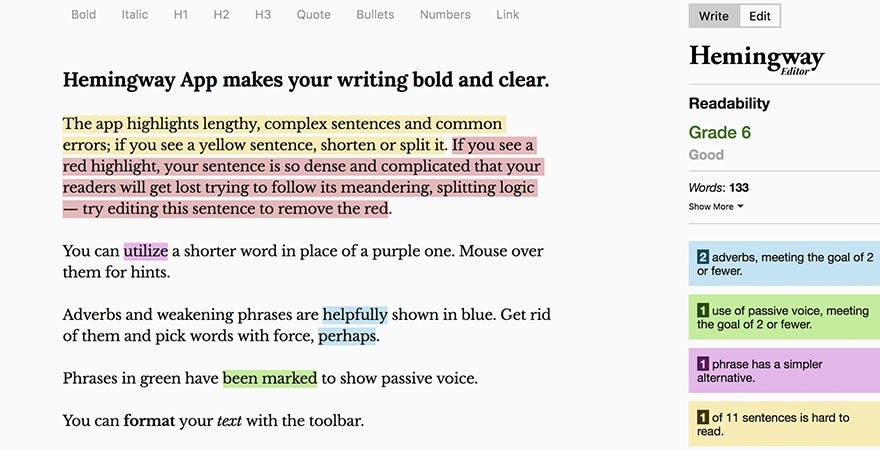
Buffer: Buffer is a great scheduling tool for bloggers because it allows you to share your content on your social media accounts. Buffer automates social media sharing so you can set the time you want content shared on your platforms. The analytics are also helpful as it tells you how many clicks and shares each post got to help you better understand what performs best.
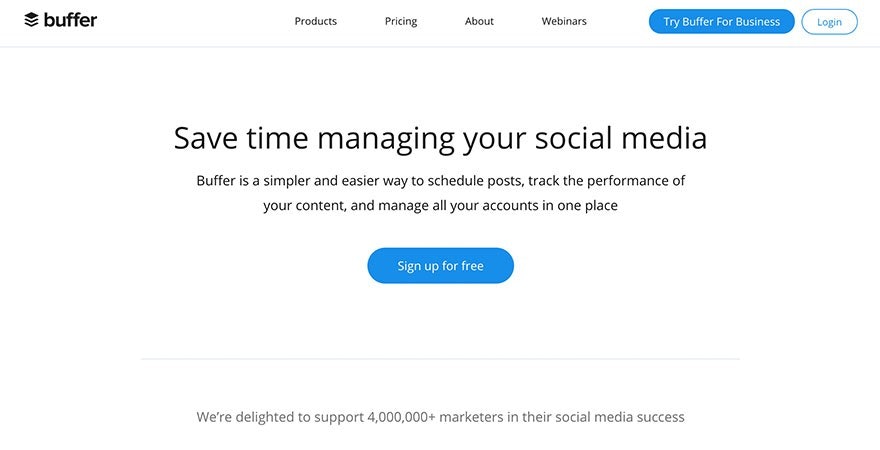
Google Analytics: Google Analytics allows you to analyze your content’s data. It allows you to see your traffic, bounce rate, average time on page, page value and more. You can also view your most popular keywords.
If you’re interested in getting to know the other ways you can use Google Analytics, check out this blogpost.

How to Write a Blog Resources:
Oberlo’s Ecommerce Blogging covers why you should start a blog. You’ll learn tips to create great content such as how to use other blogs as inspiration. If you’re stuck coming up with blog topics it’ll teach you how to come up with ideas. And you can also learn tricks on how to drive traffic to your blog and how to monetize your blog.
Oberlo’s How to Create a Content Strategy dives into the steps to take to create more high-quality content. You’ll learn the easiest strategy for content so that you always have new content out.
How to Grow Your Blog to 100,000 Visitors in Less Than a Year is a great blog post that details how you can grow your blog. It details how many words your post should be, what to include in your blog post and more. Apply the strategies from this blog post to your own store’s blog.
How to Write 5 or More Articles a Week and Not Burn Out is a great article for those who’d like to see big results from their blog traffic. The more content you create, the more content that gets indexed. Thus, making it more likely that people will find it. This article helps teach you how to avoid writer’s burn out so that you can reap the rewards from consistent content output.
How to Write a Blog Post: A Simple Formula + 5 Free Blog Post Templates helps you learn the different formats for writing a blog post well. You can even use their templates to format your own content. The blog offers suggestions to ensure you write a blog post that captures your audience’s attention.
Blogging Influencers:

1. Empower consumers with freemium information. If you sell office supplies, set-up a video tweet schedule with 120 second teasers directed to your blog to help people get organized.
2. If your products are consumables, implement recipe rich snippets and build a library of recipes that sell your consumables. This also is true for any retailer related to food including kitchen appliances.
3. Use Taxonomy and Ontologies that match your buyer personas. Nothing is more boring than wading through details when you’re just trying to sell something fun. Make the power feel they’re going to be the next hipster in the NOW.
4. Use Automation! There are services out there that will help you plan your content schedule and post them to social media at optimal times of the day!
5. Keep your navigation structure SIMPLE. If your buyer personas read left to right, navigation at the TOP and to the LEFT. Opposite for Right to Left readerships.
6. ENCOURAGE user generated content! Be the “Dear Abby” and be a thoughtful listener and let your customer do the ‘talking’ in your webspace. User forums are a great example. You may then measure the effectiveness of a product launch.
7. Integrate Instagram from your customers who tag with your branded hashtag. Everyone loves to be a braggart with their new purchases. Maybe they’re showing off a new outfit they purchased from your online retail store?
8. Use consistent virtual live video streams. There are even software out there that will help you automate. Just show up and smile pretty! Customer focus groups, Ask the Engineer, etc.
9. Form content alliances! If you sell organic plants and someone else sells planters, you both win! Be the guest blogger in your strategic alliance.
10. Build your personal branding FIRST! This means detailed social media profiles, getting out on camera and photo, authoring blog posts. There’s a whole wealth of information in psychology about human recognition and trust. Ray Kroc used to work the kitchen and register in the early days of his franchise empire.”
How to Write a Blog: The Dos and Don’ts of Writing a Blog
As a refresher, here are some do’s and don’ts that you can keep in mind as a checklist when writing a blog.
When Writing a Blog Do…
Know your focus
When you’re starting out with blog writing, you must know who you’re planning to write for. Ask yourself who your target audience is, and what they’re interested in reading about. Keep their interests in mind and make sure your content is catered to their needs. The secret to becoming a great content writer is not just knowing what your readers want, but also passing on that information to them in a way that they find most valuable. Find your focus, and become an expert in it.
Link
Remember to link to other blogposts and websites that contain information that you perceive to be valuable for your audience. Not only will this bring a boost in your clicks, but it will also help improve your blog’s search engine rankings.
Share your content
So, you’ve figured out how to write a great blogpost, but how is your target audience going to find out about it? Share your content. Whether it’s social media sharing or email marketing, don’t forget to spread your content across different marketing channels. Remember, sharing is caring.
Respond to comments
Don’t miss out on the opportunity to communicate with your readers by replying to their comments. Sure, you don’t have to respond to spam, but make sure to respond to other comments. It helps to build a relationship with your readers, which is mighty useful for your brand.
Include meaningful images
Images help to create a feeling on your blogpost. Add images that are not only relevant, but that also visually stimulate your readers and add personality to your blogpost Enhance your brand image by adding images that rightfully represent you and your content. If you’re looking for further blog design inspiration, check it out here.
When Writing a Blog Don’t…
Be unrealistic
Know what you can and can’t do, in terms of blog writing. Especially if you’re a solopreneur. You know your schedule the best, so see how often you can post and stick to it. Streamline your process, and always keep an eye out for opportunities to improve.
Make grammatical errors
And if you find a grammar mistake on your blogpost, (or if one of your readers informs you about it) correct it immediately. If you want to create and manage a specific type of image, you’ll have to take your blog content seriously, and that includes the grammar.
Be Negative
This doesn’t mean that you shouldn’t be honest when reviewing something in your blogpost, but generally refrain from bringing any personal grievances into your blog writing. It doesn’t work well with your audience and they’re quick to pick up on the negativity. Try to be inspirational, positive, supportive, and work on building a community around this feeling.
Limit your word count
Don’t limit yourself to a word count. If you have something to say, express it fully, and don’t worry about how many words you’re using. Readers (and search engines) tend to prefer blogposts that are longer and more descriptive. Of course, this doesn’t mean that you need to keep rambling on about nonsense, but as a general rule, keep your blogposts as descriptive and purposeful to your readers as you can.
